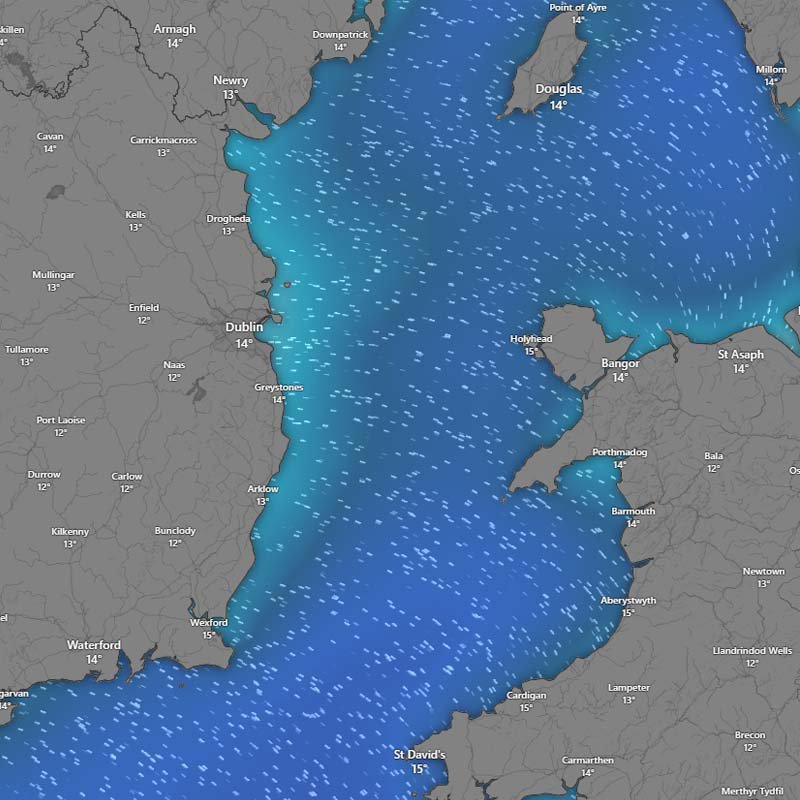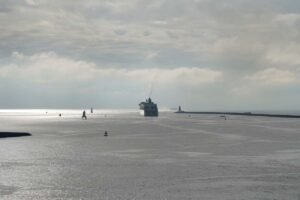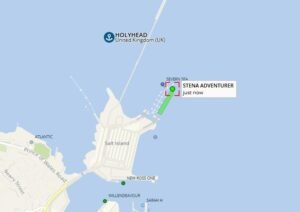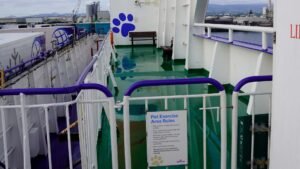Holyhead to Dublin Ferry Weather
The weather conditions can affect both the travel schedule and comfort on board the ferry. On the maps you can check how rough the sea is today, see the current weather between Dublin and Holyhead, and view the forecast for the coming days.
Real-time maps of waves and wind
Irish sea conditions between Holyhead and Dublin
To assess the Irish Sea conditions, you can use real-time maps that display wave height and wind speed. These are good indicators of the Holyhead-Dublin crossing's comfort and, in some cases, even for suspending the ferry service altogether.
The ferry trip between Holyhead and Dublin goes over the Irish Sea, which is relatively shallow. As a result, the water can become quite rough quite quickly. Storms and strong winds often come in from the southwest, straight from the Atlantic Ocean. When this occurs, the waves flow directly into the sea between Wales and Ireland, making the crossing at times rough.
weather today
7-Day weather forecast for the Irish Sea ferry crossing
The interactive maps show the current situation, but if you want to know what conditions will be like tomorrow or later this week, you can use the 7-day forecast for the Irish Sea between Holyhead and Dublin.
What to pay attention to
In particular, wind gusts are a good indicator of wave conditions at sea. When gusts exceed 30 knots, conditions become rough, and if the wind is coming from the south or southwest, the chance of high waves and possible ferry cancellations increases.
*The forecast is currently limited to 5 days, but we are working on extending it to a longer time span.
The Fast Ferry is more sensitive to waves
On the Holyhead–Dublin route there is a clear difference between the Fast Ferry and the larger vessels such as the Ulysses.
Because the Fast Ferry is smaller and lighter, it reacts more strongly to waves and rough seas. This often makes the crossing less comfortable and increases the chance of seasickness. In stormy conditions, the Fast Ferry is also more likely to be cancelled.
The larger ferries, like the Ulysses, are heavier and more stable. They can handle rough weather better, which means fewer cancellations and usually a much smoother and more comfortable journey.
Weather
Weather impact on Holyhead-Dublin Ferries
The weather on the Holyhead to Dublin ferry crossing is a crucial factor for passengers and crew alike. This stretch of water, part of the Irish Sea, is known for its unpredictable weather patterns, which can significantly impact ferry schedules. While the summer months often promise calmer seas and clearer skies, the winter and autumn can bring challenging conditions. High winds and rough seas are not uncommon, which can lead to potential delays or cancellations of ferry services.
For those planning to travel on this route, it's always wise to check the weather forecast in advance and stay updated with the ferry company for any weather-related changes in the sailing schedule.
How often does it storm on the Irish Sea?
It can regularly be very stormy on the Irish Sea. According to experts (source: The Irish Times), climate change may even make storms on the Irish Sea more common.
It is smart to keep a close eye on the weather forecast so that you can get on board with the proper clothing and be well-prepared.

Book easily online
On Holyhead-Dublin.com you can easily compare ferry prices, check the latest weather conditions, and find practical information about the ports. Whether you’re planning your trip, checking for the best deal, or preparing for the crossing, the site brings everything together in one place.



